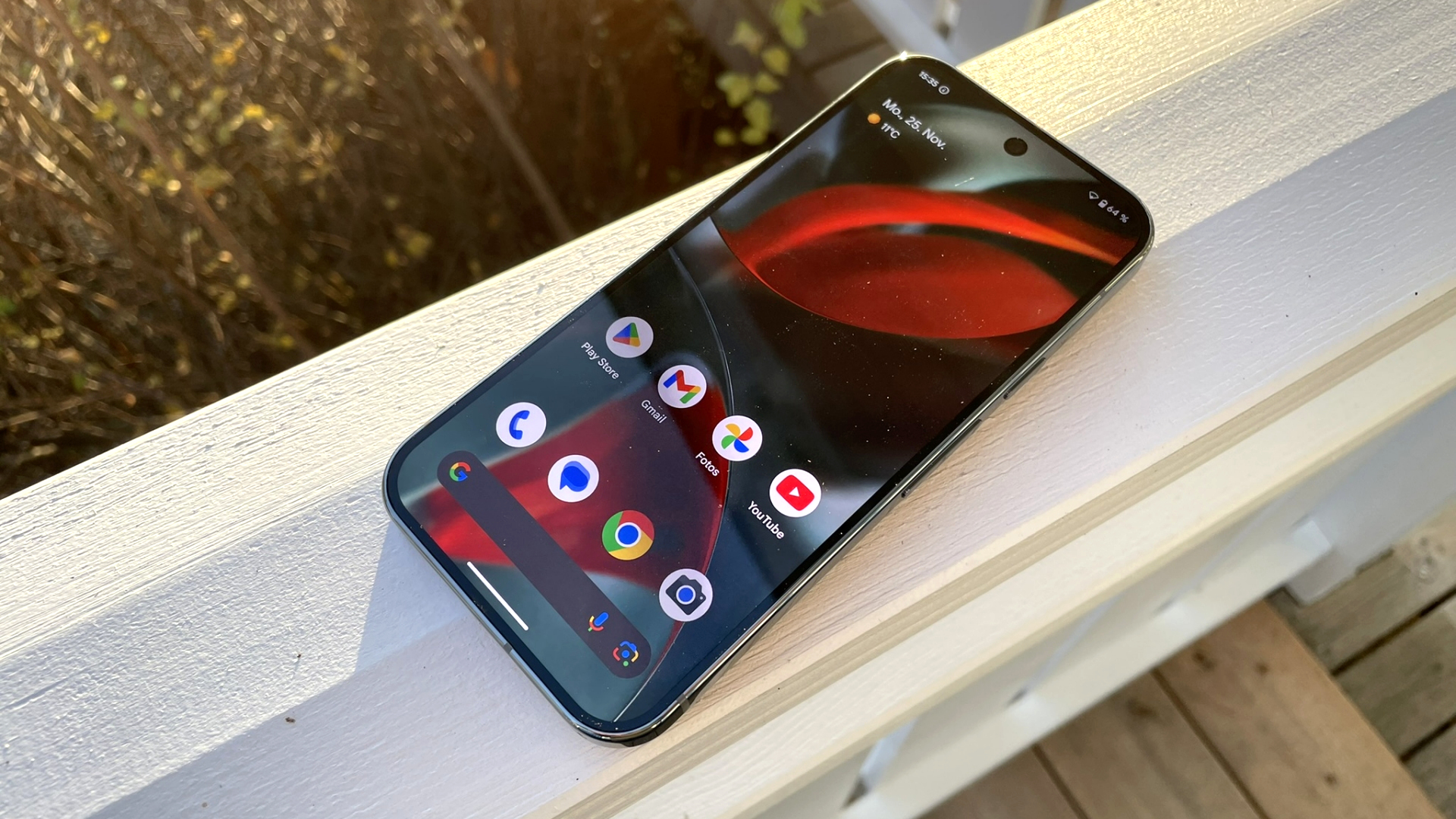
Análise do smartphone Google Pixel 9 Pro - O carro-chefe compacto com ótimas câmeras
Mini potência de IA.
Pequeno e, ainda assim, com ainda mais resistência, uma tela muito mais brilhante e ainda mais IA: o Pixel 9 Pro de 6,3 polegadas pode fazer muito mais do que seu antecessor e, nesse teste, provou ser digno de ser classificado como um dos melhores smartphones compactos atualmente no mercado. Infelizmente, ele não está totalmente isento de seus pontos fracos.Manuel Masiero, 👁 Daniel Schmidt (traduzido por DeepL / Ninh Duy) Publicado 🇺🇸 🇩🇪 ...
Veredicto sobre o Google Pixel 9 Pro
O Google Pixel 9 Pro pertence aos melhores smartphones compactos que estão atualmente no mercado. Suas câmeras atestam seu forte pacote geral, oferecendo uma qualidade de imagem muito boa e cobrindo todos os cenários de fotografia, de macro a telefoto. A construção de alta qualidade do Pixel 9 Pro, o painel OLED brilhante, a bateria de longa duração, a infinidade de recursos práticos de IA e os 7 anos de atualizações também são características muito atraentes. Além disso, seus recursos de comunicação não deixam nada a desejar, pois o telefone suporta NFC, UWB, WiFi 7 e muitas frequências de celular.
Infelizmente, o desempenho do Pixel 9 Pro é bastante mediano devido à lentidão comparativa do Google Tensor G4 e seu armazenamento UFS-3.1 também significa que ele não consegue acompanhar o ritmo de outros telefones emblemáticos do mercado. É uma pena que a variante de armazenamento básica venha novamente com apenas 128 GB de armazenamento, pois isso simplesmente não está mais atualizado em 2024. Também temos que criticar sua velocidade de carregamento lenta de 27 watts, na melhor das hipóteses, porque, embora proteja a bateria do telefone, também pode testar um pouco sua paciência.
Pro
Contra
Preço e disponibilidade
O senhor pode comprar o Google Pixel 9 Pro na maioria dos principais varejistas on-line, como a Amazon, onde ele custa atualmente US$ 987,99.
Possíveis concorrentes em comparação
Imagem | Modelo / Análises | Geizhals | Peso | Unidade | Tela |
|---|---|---|---|---|---|
| Google Pixel 9 Pro Google Tensor G4 ⎘ ARM Mali-G715 MP7 ⎘ 16 GB Memória, 128 GB | 199 g | 128 GB UFS 3.1 Flash | 6.30" 2856x1280 495 PPI OLED | ||
| Apple iPhone 16 Pro Apple A18 Pro ⎘ Apple A18 Pro GPU ⎘ 8 GB Memória, 128 GB NVMe | 199 g | 128 GB NVMe | 6.30" 2622x1206 460 PPI Super Retina XDR OLED | ||
| Google Pixel 8 Pro Google Tensor G3 ⎘ ARM Mali-G715 MP7 ⎘ 12 GB Memória, 128 GB | Listenpreis 1099€ | 213 g | 128 GB UFS 3.1 Flash | 6.70" 2992x1344 490 PPI OLED | |
| OnePlus 12 Qualcomm Snapdragon 8 Gen 3 ⎘ Qualcomm Adreno 750 ⎘ 16 GB Memória, 512 GB | 220 g | 512 GB UFS 4.0 Flash | 6.82" 3168x1440 510 PPI AMOLED | ||
| Samsung Galaxy S24+ Samsung Exynos 2400 ⎘ Samsung Xclipse 940 ⎘ 12 GB Memória, 512 GB | 196 g | 512 GB UFS 4.0 Flash | 6.70" 3120x1440 513 PPI AMOLED | ||
| Xiaomi 14T Pro MediaTek Dimensity 9300+ ⎘ ARM Immortalis-G720 MP12 ⎘ 12 GB Memória, 1024 GB | 209 g | 1 TB UFS 4.0 Flash | 6.67" 2712x1220 446 PPI AMOLED |
Índice
- Veredicto sobre o Google Pixel 9 Pro
- Especificações
- Case - 6,3 polegadas e com certificação IP68
- Conectividade - O smartphone do Google com um chip UWB e um termômetro infravermelho
- Software - Android 14 e 7 anos de atualizações para o Pixel 9 Pro
- Comunicação e GNSS - WiFi 7 de alta velocidade e bom GPS
- Recursos telefônicos e qualidade das chamadas - O Pixel 9 Pro com suporte para eSIM
- Câmeras - O Google Pixel 9 Pro com uma poderosa câmera tripla e vídeos em 8K
- Acessórios e garantia - O smartphone Google sem fonte de alimentação
- Dispositivos de entrada e operação - Painel OLED LTPO a 120 Hz no Pixel 9 Pro
- Tela - OLED tandem superbrilhante no interior do Pixel 9 Pro
- Desempenho - O Google Tensor G4 coloca seu foco na IA
- Emissões - Alto-falantes duplos dentro do telefone Pixel
- Duração da bateria - Mais resistência do que seu antecessor, apesar de uma bateria menor
- Classificação total do Notebookcheck
O Google Pixel 9 Pro é o sucessor do Pixel 8 Pro. Embora não tenha mudado muito em seu design geral, seu tamanho diminuiu de 6,7 polegadas para 6,3 polegadas. Isso faz com que o Pixel 9 Pro tenha exatamente o mesmo tamanho que o Pixel 9 e, por sua vez, um dos smartphones de ponta mais compactos atualmente no mercado. O maior smartphone Pixel no momento é o Pixel 9 Pro XL.
Nosso candidato de teste recebeu um pouco mais de desempenho em comparação com seu antecessor graças ao Google Tensor G4e seu novo painel OLED em tandem faz com que ele brilhe ainda mais. Embora sua bateria tenha diminuído ligeiramente de 5.050 mAh para 4.700 mAh, nosso teste revelou que o Pixel 9 Pro possui ainda mais resistência do que o Pixel 8 Pro.
O Google não mudou nada em relação ao preço do telefone. Testamos a versão básica, que ainda conta com 128 GB de armazenamento. O Google cobra US$ 999 por ele, ou seja, o mesmo que o Pixel 8 Pro.
Especificações
Os Top 10
» Os Top 10 Portáteis Multimídia
» Os Top 10 Portáteis de Jogos
» Os Top 10 Portáteis Leves para Jogos
» Os Top 10 Portáteis Acessíveis de Escritório/Empresariais
» Os Top 10 Portáteis Premium de Escritório/Empresariais
» Os Top 10 dos Portáteis Workstation
» Os Top 10 Subportáteis
» Os Top 10 Ultrabooks
» Os Top 10 Conversíveis
» Os Top 10 Tablets
» Os Top 10 Smartphones
» A melhores Telas de Portáteis Analisadas Pela Notebookcheck
» Top 10 dos portáteis abaixo dos 500 Euros da Notebookcheck
» Top 10 dos Portáteis abaixo dos 300 Euros
Case - 6,3 polegadas e com certificação IP68
A qualidade de construção do Google Pixel 9 Pro é impressionante e sua classificação IP68 oferece proteção eficaz contra água e poeira. A frente e a traseira do smartphone são protegidas por um painel de Gorilla Glass Victus 2 cada e são unidas por uma estrutura de metal polido. A tampa traseira tem uma sensação de alta qualidade com seu acabamento de superfície fosco como seda. O revestimento também torna a parte traseira imune a marcas de impressões digitais.
Nosso dispositivo de teste apresenta a cor Hazel (cinza escuro). Há mais três variantes de cores do telefone disponíveis, a saber, Porcelain (bege claro), Rose Quartz e Obsidian (preto).
Conectividade - O smartphone do Google com um chip UWB e um termômetro infravermelho
O Google oferece o Pixel 9 Pro em variantes de armazenamento UFS 3.1 de 128, 256 e 512 GB, cada uma com 16 GB de RAM. Nosso dispositivo de teste de 128 GB custa US$ 999 na Google Store. O armazenamento interno não pode ser expandido.
Além de NFC e Bluetooth 5.3, o Pixel 9 Pro é compatível com Miracast e Google Cast. O chip Titan M2 interno ajuda a armazenar com segurança as senhas e os dados do usuário. Ao contrário do Pixel 9o modelo Pro tem um chip UWB e um termômetro IR.
A porta USB OTG do telefone é conectada de acordo com o padrão USB 3.2 Gen 1 e, portanto, deveria teoricamente garantir taxas de transferência de mais de 250 MB/s. No entanto, usando nosso Samsung PSSD T7 A porta USB conseguiu apenas 180,1 MB/s durante o teste de cópia. Nossa configuração usual de SSD com o Samsung 990 Pro não foi reconhecida como armazenamento, o que provavelmente se deve ao fato de que a porta USB não conseguiu fornecer tensão de saída suficiente para isso.
Software - Android 14 e 7 anos de atualizações para o Pixel 9 Pro
De acordo com o fabricante, o Android 14 pré-instalado receberá atualizações do sistema operacional e atualizações de segurança por 7 anos. Essas últimas são lançadas mensalmente. No momento do teste (final de novembro), o smartphone já havia sido atualizado para Android 15.
A IA está no centro da atual geração do Pixel. Como resultado, não é surpresa que o Pixel 9 Pro também venha equipado com recursos de IA, como o Circle to Search e o assistente inteligente Gemini. O modelo Pro também inclui o Gemini Advanced e 2 TB de armazenamento em nuvem por 1 ano gratuitamente.
Sustentabilidade
O Google não só dá grande importância à sustentabilidade por meio de seu longo período de atualização, mas também por meio de sua escolha de materiais. De acordo com o relatório de sustentabilidade do fabricante https://sustainability.google/reports/pixel-9-pro-product-environmental-report/32 gramas do peso total de 199 gramas do smartphone consistem em alumínio 100% reciclado. Dez dos 15 componentes plásticos do Pixel 9 Pro são feitos de materiais reciclados. A embalagem é totalmente livre de plástico. O Google afirma que a pegada de carbono do telefone é de 72 kg.
Comunicação e GNSS - WiFi 7 de alta velocidade e bom GPS
O Pixel 9 Pro é um verdadeiro "telefone do mundo". Sua cobertura de frequência de telefonia móvel é tão extensa que o senhor deve conseguir obter um sinal sem fio em praticamente qualquer lugar.
Em distâncias curtas, o smartphone do Google funciona usando WiFi 7, e também suporta Wi-Fi de 6 GHz. Em combinação com nosso roteador de referência Asus ROG Rapture GT-AXE11000, o smartphone alcançou taxas de transferência de dados altas e estáveis.
| Networking | |
| Google Pixel 9 Pro | |
| iperf3 transmit AXE11000 | |
| iperf3 receive AXE11000 | |
| iperf3 transmit AXE11000 6GHz | |
| iperf3 receive AXE11000 6GHz | |
| Apple iPhone 16 Pro | |
| iperf3 transmit AXE11000 | |
| iperf3 receive AXE11000 | |
| iperf3 transmit AXE11000 6GHz | |
| iperf3 receive AXE11000 6GHz | |
| Google Pixel 8 Pro | |
| iperf3 transmit AXE11000 | |
| iperf3 receive AXE11000 | |
| iperf3 transmit AXE11000 6GHz | |
| iperf3 receive AXE11000 6GHz | |
| OnePlus 12 | |
| iperf3 transmit AXE11000 | |
| iperf3 receive AXE11000 | |
| Samsung Galaxy S24+ | |
| iperf3 transmit AXE11000 | |
| iperf3 receive AXE11000 | |
| iperf3 transmit AXE11000 6GHz | |
| iperf3 receive AXE11000 6GHz | |
| Xiaomi 14T Pro | |
| iperf3 transmit AXE11000 | |
| iperf3 receive AXE11000 | |
| iperf3 transmit AXE11000 6GHz | |
| iperf3 receive AXE11000 6GHz | |
| Média Wi-Fi 7 | |
| iperf3 transmit AXE11000 | |
| iperf3 receive AXE11000 | |
| iperf3 transmit AXE11000 6GHz | |
| iperf3 receive AXE11000 6GHz | |
| Média da turma Smartphone | |
| iperf3 transmit AXE11000 | |
| iperf3 receive AXE11000 | |
| iperf3 transmit AXE11000 6GHz | |
| iperf3 receive AXE11000 6GHz | |
O Pixel 9 Pro usa GNSS de banda dupla e todos os serviços globais de navegação por satélite para determinar sua posição atual. Em comparação com o smartwatch de fitness Garmin Venu 2, que serviu como dispositivo de referência durante nosso teste, sua localização nem sempre foi totalmente precisa, mas ainda assim é totalmente suficiente para o uso diário.
Recursos telefônicos e qualidade das chamadas - O Pixel 9 Pro com suporte para eSIM
O Pixel 9 Pro tem um único slot para cartão SIM e suporta eSIMs. Como alternativa, o senhor pode ativar dois eSIMs. VoLTE e VoWiFi são suportados.
O telefone do Google oferece uma qualidade de chamada muito boa e filtra de forma confiável o ruído de fundo, mesmo em ambientes barulhentos. No modo viva-voz, a inteligibilidade permanece quase a mesma.
Câmeras - O Google Pixel 9 Pro com uma poderosa câmera tripla e vídeos em 8K
Graças à sua configuração de câmera tripla, o Pixel 9 Pro tem um zoom periscópio de 48 MP que o Pixel 9 não possui, o que permite uma ampliação óptica de 5x. O senhor pode ampliar digitalmente as fotos em até 30x. Gostamos muito das fotos tiradas com a câmera telefoto na faixa de zoom óptico. As outras câmeras na parte traseira - uma lente grande angular de 50 MP e uma lente ultra grande angular de 48 MP - são idênticas às do Pixel 9. No geral, o senhor obtém fotos muito boas com cores neutras.
A câmera para selfies do Pixel 9 Pro também deu um salto em relação ao Pixel 9, pois agora usa uma lente de 42 MP com foco automático em vez de uma câmera de 10 MP. O binning de pixels é usado para combinar 4 pixels vizinhos, resultando em fotos de 10 MP. Elas apresentam um alto nível de detalhes e uma representação de cores harmoniosa.
O Pixel 9 Pro grava vídeos de boa qualidade com a câmera selfie e consegue até 4K a 60 quadros por segundo. No entanto, os vídeos não são muito bem estabilizados. A câmera principal, que tem uma resolução mais alta, se sai muito melhor nesse aspecto. Usando essa lente, o senhor pode esperar até 8K a 30 quadros por segundo, enquanto o limite de FPS para 4K também é de 60 quadros por segundo. Os modos de filmagem com suporte de IA, como visão noturna ou panorama, convidam o senhor a experimentar, e eles também têm boa aparência.
Comparação de imagens
Escolha uma cena e navegue pela primeira imagem. Um clique muda a posição nas telas sensíveis ao toque. Um clique na imagem ampliada abre o original em uma nova janela. A primeira imagem mostra a fotografia em escala do dispositivo de teste.
Daylight photo 1Daylight photo 2Ultra-wide angle5x zoomLow-light photoEm nosso laboratório de testes, verificamos a capacidade da câmera principal de reproduzir as cores de referência do gráfico de teste ColorChecker em condições de iluminação controladas. Em geral, não notamos nenhuma anomalia importante. Houve apenas pequenos desvios da meta (Delta-E > 10) quando se tratava de cores ciano claro e tons de marrom escuro.


Acessórios e garantia - O smartphone Google sem fonte de alimentação
Há poucos acessórios incluídos na embalagem fina do Pixel 9 Pro. Eles se limitam a um cabo USB-C (USB 2.0), alguns folhetos e um pino SIM. Acessórios correspondentes, como um adaptador de energia de 45 watts e várias capas protetoras, estão disponíveis na Google Shop.
O Google Pixel 9 Pro vem com uma garantia de 12 meses. O fabricante pretende fornecer peças de reposição originais por 7 anos - não diretamente, mas por meio da loja on-line de seu parceiro iFixit.
Dispositivos de entrada e operação - Painel OLED LTPO a 120 Hz no Pixel 9 Pro
Graças à sua taxa de atualização de 120 Hz, a tela LTPO de 161 mm do Pixel 9 Pro é muito suave de operar e os comandos são implementados com precisão em toda a tela sensível ao toque. Seu motor de vibração linear oferece feedback preciso.
O sensor de impressão digital integrado ao botão liga/desliga funciona usando um sensor ultrassônico, que garante maior precisão em comparação com um sensor óptico. Os dedos foram reconhecidos muito rapidamente durante nosso teste. A autenticação biométrica também é possível por meio do reconhecimento facial 2D usando a câmera selfie. Embora isso seja significativamente menos seguro, ele desbloqueia o smartphone de forma igualmente confiável em boas condições de iluminação.
Tela - OLED tandem superbrilhante no interior do Pixel 9 Pro
O painel OLED de 6,3 polegadas do telefone tem uma resolução de 2.856 x 1.280 pixels, o que lhe confere uma alta densidade de pixels de 495 PPI. Além de HDR10 e HDR10+, ele também suporta HLG.
Em contraste com o Pixel 9o Pixel 9 Pro tem um painel OLED LTPO e, portanto, pode ajustar dinamicamente sua taxa de atualização entre 1 e 120 Hz. Ele também se sai melhor do que os níveis de brilho já recordes do Pixel padrão.
Ao representar um fundo totalmente branco, o Pixel 9 Pro apresenta um brilho médio de 2016 cd/m², o que é inigualável em sua classe. Infelizmente, porém, o brilho não é distribuído de maneira muito uniforme (iluminação de apenas 84%). Ao exibir seções de imagem menores (APL18), o smartphone do Google aumenta para imensos 3.101 cd/m². No modo HDR, ainda medimos excelentes 2.970 cd/m².
O painel OLED do Pixel 9 Pro pisca a 240 Hz em todos os níveis de brilho que medimos, o que não é particularmente alto. No entanto, a amplitude está abaixo de 20%, portanto, há uma boa chance de que mesmo os usuários mais sensíveis não tenham nenhuma reclamação. Ainda assim, em caso de dúvida, o senhor deve experimentar o smartphone antes de comprá-lo.
| |||||||||||||||||||||||||
iluminação: 84 %
iluminação com acumulador: 2083 cd/m²
Contraste: ∞:1 (Preto: 0 cd/m²)
ΔE Color 0.7 | 0.5-29.43 Ø4.87
ΔE Greyscale 1.1 | 0.5-98 Ø5.1
99.1% sRGB (Calman 2D)
Gamma: 2.22
| Google Pixel 9 Pro OLED, 2856x1280, 6.3" | Apple iPhone 16 Pro Super Retina XDR OLED, 2622x1206, 6.3" | Google Pixel 8 Pro OLED, 2992x1344, 6.7" | OnePlus 12 AMOLED, 3168x1440, 6.8" | Samsung Galaxy S24+ AMOLED, 3120x1440, 6.7" | Xiaomi 14T Pro AMOLED, 2712x1220, 6.7" | |
|---|---|---|---|---|---|---|
| Screen | -34% | -41% | -58% | -106% | -18% | |
| Brightness middle | 2083 | 1034 -50% | 1510 -28% | 1026 -51% | 1358 -35% | 953 -54% |
| Brightness | 2016 | 1034 -49% | 1467 -27% | 991 -51% | 1358 -33% | 961 -52% |
| Brightness Distribution | 84 | 98 17% | 92 10% | 91 8% | 92 10% | 95 13% |
| Black Level * | ||||||
| Colorchecker dE 2000 * | 0.7 | 0.98 -40% | 1.1 -57% | 1.19 -70% | 3 -329% | 0.9 -29% |
| Colorchecker dE 2000 max. * | 2 | 2.76 -38% | 3.8 -90% | 3.3 -65% | 4.4 -120% | 1.5 25% |
| Greyscale dE 2000 * | 1.1 | 1.6 -45% | 1.7 -55% | 2.4 -118% | 2.5 -127% | 1.2 -9% |
| Gamma | 2.22 99% | 2.17 101% | 2.23 99% | 2.24 98% | 1.98 111% | 2.22 99% |
| CCT | 6560 99% | 6638 98% | 6670 97% | 6920 94% | 6656 98% | 6580 99% |
| Color Space (Percent of sRGB) | 99.5 |
* ... menor é melhor
Cintilação da tela / PWM (modulação por largura de pulso)
| Tela tremeluzindo/PWM detectado | 240 Hz Amplitude: 16.62 % | ||
A luz de fundo da tela pisca em 240 Hz (pior caso, por exemplo, utilizando PWM) . A frequência de 240 Hz é relativamente baixa, portanto, usuários sensíveis provavelmente notarão cintilação e sentirão fadiga ocular na configuração de brilho indicada e abaixo. [pwm_comparison] Em comparação: 53 % de todos os dispositivos testados não usam PWM para escurecer a tela. Se PWM foi detectado, uma média de 8529 (mínimo: 5 - máximo: 343500) Hz foi medida. | |||
Série de medições com nível de zoom fixo e diferentes configurações de brilho (A curva de amplitude no brilho mínimo parece plana, mas isso se deve à escala. A caixa de informações mostra a versão ampliada da amplitude no brilho mínimo).
O Pixel 9 Pro oferece aos usuários apenas algumas opções para ajustar a tela - há apenas dois perfis de cores(Natural, Adaptativo). Por outro lado, o usuário não precisa configurar muito, pois a representação de cores do painel OLED é realmente muito boa e é a mais precisa com o modo de cor Natural selecionado.
Exibir tempos de resposta
| ↔ Tempo de resposta preto para branco | ||
|---|---|---|
| 1.04 ms ... ascensão ↗ e queda ↘ combinadas | ↗ 0.5135 ms ascensão | |
| ↘ 0.53 ms queda | ||
| A tela mostra taxas de resposta muito rápidas em nossos testes e deve ser muito adequada para jogos em ritmo acelerado. Em comparação, todos os dispositivos testados variam de 0.1 (mínimo) a 240 (máximo) ms. » 3 % de todos os dispositivos são melhores. Isso significa que o tempo de resposta medido é melhor que a média de todos os dispositivos testados (20.8 ms). | ||
| ↔ Tempo de resposta 50% cinza a 80% cinza | ||
| 3.28 ms ... ascensão ↗ e queda ↘ combinadas | ↗ 1.589 ms ascensão | |
| ↘ 1.693 ms queda | ||
| A tela mostra taxas de resposta muito rápidas em nossos testes e deve ser muito adequada para jogos em ritmo acelerado. Em comparação, todos os dispositivos testados variam de 0.165 (mínimo) a 636 (máximo) ms. » 11 % de todos os dispositivos são melhores. Isso significa que o tempo de resposta medido é melhor que a média de todos os dispositivos testados (32.5 ms). | ||
Desempenho - O Google Tensor G4 coloca seu foco na IA
O Pixel 9 Pro conta com um SoC interno chamado Google Tensor G4 que se diz ser caracterizado pelo alto desempenho de IA. No entanto, o smartphone do Google acabou não sendo o mais rápido nos benchmarks de IA. Em benchmarks de "prestígio", como o AnTuTu v10, o Tensor G4 não conseguiu acompanhar nenhum SoC de ponta atual, já que todos eles oferecem uma potência de CPU significativamente maior.
| UL Procyon AI Inference for Android - Overall Score NNAPI | |
| Xiaomi 14T Pro | |
| Google Pixel 9 Pro | |
| Média Google Tensor G4 (35227 - 36578, n=3) | |
| Google Pixel 8 Pro | |
| OnePlus 12 | |
| Média da turma Smartphone (1267 - 81594, n=152, últimos 2 anos) | |
| Samsung Galaxy S24+ | |
| Geekbench AI | |
| Single Precision TensorFlow NNAPI 1.1 | |
| Apple iPhone 16 Pro | |
| Xiaomi 14T Pro | |
| Média da turma Smartphone (122 - 4619, n=45, últimos 2 anos) | |
| Média Google Tensor G4 (376 - 771, n=4) | |
| OnePlus 12 | |
| Google Pixel 9 Pro | |
| Half Precision TensorFlow NNAPI 1.1 | |
| Apple iPhone 16 Pro | |
| Média Google Tensor G4 (4176 - 4754, n=4) | |
| Xiaomi 14T Pro | |
| Google Pixel 9 Pro | |
| Média da turma Smartphone (122 - 32432, n=45, últimos 2 anos) | |
| OnePlus 12 | |
| Quantized TensorFlow NNAPI 1.1 | |
| Apple iPhone 16 Pro | |
| Média Google Tensor G4 (6269 - 6451, n=4) | |
| Google Pixel 9 Pro | |
| Média da turma Smartphone (118 - 44657, n=45, últimos 2 anos) | |
| Xiaomi 14T Pro | |
| OnePlus 12 | |
Com seu processador ARM Mali-G715 MP7o Google Tensor G4 também obteve apenas resultados médios no que diz respeito ao desempenho da GPU. Pelo menos isso foi suficiente para um pequeno aumento de desempenho em comparação com o Pixel 8 Pro.
GFXBench (DX / GLBenchmark) 2.7: T-Rex Onscreen | 1920x1080 T-Rex Offscreen
GFXBench 3.0: on screen Manhattan Onscreen OGL | 1920x1080 1080p Manhattan Offscreen
GFXBench 3.1: on screen Manhattan ES 3.1 Onscreen | 1920x1080 Manhattan ES 3.1 Offscreen
GFXBench: on screen Car Chase Onscreen | 1920x1080 Car Chase Offscreen | on screen Aztec Ruins High Tier Onscreen | 2560x1440 Aztec Ruins High Tier Offscreen | on screen Aztec Ruins Normal Tier Onscreen | 1920x1080 Aztec Ruins Normal Tier Offscreen | 3840x2160 4K Aztec Ruins High Tier Offscreen
| 3DMark / Wild Life Extreme Unlimited | |
| OnePlus 12 | |
| Samsung Galaxy S24+ | |
| Apple iPhone 16 Pro | |
| Xiaomi 14T Pro | |
| Google Pixel 9 Pro | |
| Google Pixel 8 Pro | |
| 3DMark / Wild Life Extreme | |
| Apple iPhone 16 Pro | |
| OnePlus 12 | |
| Samsung Galaxy S24+ | |
| Xiaomi 14T Pro | |
| Google Pixel 9 Pro | |
| Google Pixel 8 Pro | |
| 3DMark / Wild Life Unlimited Score | |
| Apple iPhone 16 Pro | |
| OnePlus 12 | |
| Xiaomi 14T Pro | |
| Samsung Galaxy S24+ | |
| Google Pixel 9 Pro | |
| Google Pixel 8 Pro | |
| 3DMark / Steel Nomad Light Unlimited Score | |
| Apple iPhone 16 Pro | |
| OnePlus 12 | |
| Xiaomi 14T Pro | |
| Google Pixel 9 Pro | |
| 3DMark / Steel Nomad Light Score | |
| Apple iPhone 16 Pro | |
| OnePlus 12 | |
| Xiaomi 14T Pro | |
| Google Pixel 9 Pro | |
| 3DMark / Sling Shot Extreme (ES 3.1) Unlimited Physics | |
| Xiaomi 14T Pro | |
| OnePlus 12 | |
| Samsung Galaxy S24+ | |
| Google Pixel 9 Pro | |
| Google Pixel 8 Pro | |
| 3DMark / Sling Shot Extreme (ES 3.1) Unlimited Graphics | |
| OnePlus 12 | |
| Samsung Galaxy S24+ | |
| Xiaomi 14T Pro | |
| Google Pixel 9 Pro | |
| Google Pixel 8 Pro | |
| 3DMark / Sling Shot Extreme (ES 3.1) Unlimited | |
| OnePlus 12 | |
| Xiaomi 14T Pro | |
| Samsung Galaxy S24+ | |
| Google Pixel 9 Pro | |
| Google Pixel 8 Pro | |
| GFXBench (DX / GLBenchmark) 2.7 / T-Rex Onscreen | |
| Google Pixel 8 Pro | |
| Google Pixel 9 Pro | |
| Xiaomi 14T Pro | |
| Samsung Galaxy S24+ | |
| OnePlus 12 | |
| Apple iPhone 16 Pro | |
| GFXBench (DX / GLBenchmark) 2.7 / T-Rex Offscreen | |
| Xiaomi 14T Pro | |
| OnePlus 12 | |
| Apple iPhone 16 Pro | |
| Google Pixel 9 Pro | |
| Samsung Galaxy S24+ | |
| Google Pixel 8 Pro | |
| GFXBench 3.0 / Manhattan Onscreen OGL | |
| Google Pixel 8 Pro | |
| Xiaomi 14T Pro | |
| Google Pixel 9 Pro | |
| Samsung Galaxy S24+ | |
| OnePlus 12 | |
| Apple iPhone 16 Pro | |
| GFXBench 3.0 / 1080p Manhattan Offscreen | |
| Xiaomi 14T Pro | |
| Samsung Galaxy S24+ | |
| Apple iPhone 16 Pro | |
| OnePlus 12 | |
| Google Pixel 9 Pro | |
| Google Pixel 8 Pro | |
| GFXBench 3.1 / Manhattan ES 3.1 Onscreen | |
| Xiaomi 14T Pro | |
| Samsung Galaxy S24+ | |
| Google Pixel 8 Pro | |
| Google Pixel 9 Pro | |
| OnePlus 12 | |
| Apple iPhone 16 Pro | |
| GFXBench 3.1 / Manhattan ES 3.1 Offscreen | |
| Xiaomi 14T Pro | |
| Samsung Galaxy S24+ | |
| Apple iPhone 16 Pro | |
| OnePlus 12 | |
| Google Pixel 9 Pro | |
| Google Pixel 8 Pro | |
| GFXBench / Car Chase Onscreen | |
| Xiaomi 14T Pro | |
| Google Pixel 8 Pro | |
| Samsung Galaxy S24+ | |
| OnePlus 12 | |
| Apple iPhone 16 Pro | |
| Google Pixel 9 Pro | |
| GFXBench / Car Chase Offscreen | |
| Apple iPhone 16 Pro | |
| OnePlus 12 | |
| Xiaomi 14T Pro | |
| Samsung Galaxy S24+ | |
| Google Pixel 9 Pro | |
| Google Pixel 8 Pro | |
| GFXBench / Aztec Ruins High Tier Onscreen | |
| Xiaomi 14T Pro | |
| Samsung Galaxy S24+ | |
| Google Pixel 8 Pro | |
| OnePlus 12 | |
| Apple iPhone 16 Pro | |
| Google Pixel 9 Pro | |
| GFXBench / Aztec Ruins High Tier Offscreen | |
| OnePlus 12 | |
| Samsung Galaxy S24+ | |
| Xiaomi 14T Pro | |
| Apple iPhone 16 Pro | |
| Google Pixel 9 Pro | |
| Google Pixel 8 Pro | |
| GFXBench / Aztec Ruins Normal Tier Onscreen | |
| Xiaomi 14T Pro | |
| Google Pixel 8 Pro | |
| Samsung Galaxy S24+ | |
| Google Pixel 9 Pro | |
| OnePlus 12 | |
| Apple iPhone 16 Pro | |
| GFXBench / Aztec Ruins Normal Tier Offscreen | |
| OnePlus 12 | |
| Xiaomi 14T Pro | |
| Apple iPhone 16 Pro | |
| Samsung Galaxy S24+ | |
| Google Pixel 9 Pro | |
| Google Pixel 8 Pro | |
| GFXBench / 4K Aztec Ruins High Tier Offscreen | |
| OnePlus 12 | |
| Samsung Galaxy S24+ | |
| Xiaomi 14T Pro | |
| Apple iPhone 16 Pro | |
| Google Pixel 9 Pro | |
| Google Pixel 8 Pro | |
O Pixel 9 Pro só apresentou desempenho medíocre durante os benchmarks de navegador. No entanto, isso não é perceptível ao navegar na Web, pois as páginas carregam rapidamente.
| Jetstream 2 - 2.0 Total Score | |
| Apple iPhone 16 Pro (Safari 18) | |
| OnePlus 12 (Chrome 126) | |
| Samsung Galaxy S24+ (Chrome 121) | |
| Média da turma Smartphone (13.8 - 387, n=170, últimos 2 anos) | |
| Média Google Tensor G4 (107.5 - 117.5, n=3) | |
| Google Pixel 9 Pro (Chrome 131.0.6778.81) | |
| Google Pixel 8 Pro (Chrome 117) | |
| Xiaomi 14T Pro (Chrome 129) | |
| Speedometer 2.0 - Result | |
| Apple iPhone 16 Pro (Safari 18) | |
| OnePlus 12 (Chrome 126) | |
| Samsung Galaxy S24+ (Chrome 121) | |
| Google Pixel 9 Pro (Chrome 131.0.6778.81) | |
| Média Google Tensor G4 (182 - 207, n=3) | |
| Média da turma Smartphone (15.2 - 569, n=149, últimos 2 anos) | |
| Google Pixel 8 Pro (Chrome 117) | |
| Xiaomi 14T Pro (Chrome 129) | |
| Speedometer 3.0 - Score | |
| Apple iPhone 16 Pro (Safari 18) | |
| Google Pixel 9 Pro (Chrome 131.0.6778.81) | |
| Média Google Tensor G4 (14.9 - 15.8, n=3) | |
| OnePlus 12 (Chrome 126) | |
| Média da turma Smartphone (1.03 - 34, n=87, últimos 2 anos) | |
| Xiaomi 14T Pro (Chrome 129) | |
| WebXPRT 4 - Overall | |
| Apple iPhone 16 Pro (Safari 18) | |
| OnePlus 12 (Chrome 126) | |
| Samsung Galaxy S24+ (Chrome 121) | |
| Média da turma Smartphone (22 - 271, n=160, últimos 2 anos) | |
| Média Google Tensor G4 (103 - 112, n=3) | |
| Google Pixel 9 Pro (Chrome 131.0.6778.81) | |
| Google Pixel 8 Pro (Chrome 117) | |
| Xiaomi 14T Pro (Chrome 129) | |
| Octane V2 - Total Score | |
| Apple iPhone 16 Pro (Safari 18) | |
| OnePlus 12 (Chrome 126) | |
| Samsung Galaxy S24+ (Chrome 121) | |
| Google Pixel 9 Pro (Chrome 131.0.6778.81) | |
| Média Google Tensor G4 (56737 - 62374, n=4) | |
| Google Pixel 8 Pro (Chrome 117) | |
| Média da turma Smartphone (2228 - 100368, n=209, últimos 2 anos) | |
| Xiaomi 14T Pro (Chrome 129) | |
| Mozilla Kraken 1.1 - Total | |
| Xiaomi 14T Pro (Chrome 129) | |
| Média da turma Smartphone (277 - 28190, n=169, últimos 2 anos) | |
| Google Pixel 8 Pro (Chrome 117) | |
| Média Google Tensor G4 (699 - 745, n=3) | |
| Google Pixel 9 Pro (Chrome 131.0.6778.81) | |
| Samsung Galaxy S24+ (Chrome 121) | |
| OnePlus 12 (Chrome 126) | |
| Apple iPhone 16 Pro (Safari 18) | |
* ... menor é melhor
Embora o armazenamento UFS 3.1 do smartphone garanta tempos de carregamento relativamente curtos, ele fica muito atrás da taxa de transferência de dados de outros modelos de ponta.
| Google Pixel 9 Pro | Google Pixel 8 Pro | OnePlus 12 | Samsung Galaxy S24+ | Xiaomi 14T Pro | Média 128 GB UFS 3.1 Flash | Média da turma Smartphone | |
|---|---|---|---|---|---|---|---|
| AndroBench 3-5 | -11% | 381% | 147% | 462% | 48% | 155% | |
| Sequential Read 256KB | 1717.9 | 1501.13 -13% | 3297.57 92% | 2450.9 43% | 3687.54 115% | 1602 ? -7% | 2032 ? 18% |
| Sequential Write 256KB | 253.53 | 257.28 1% | 3246.21 1180% | 1523.87 501% | 3908.34 1442% | 748 ? 195% | 1646 ? 549% |
| Random Read 4KB | 218.41 | 156.16 -29% | 438.5 101% | 387.42 77% | 441.21 102% | 243 ? 11% | 283 ? 30% |
| Random Write 4KB | 261.55 | 258.92 -1% | 652.8 150% | 176.19 -33% | 752.87 188% | 244 ? -7% | 325 ? 24% |
Emissões - Alto-falantes duplos dentro do telefone Pixel
Temperatura
O Pixel 9 Pro pode esquentar bastante durante o uso. Medimos temperaturas de superfície de até 42,8 °C sob carga. Os testes de estresse do 3DMark revelaram que o smartphone reduz seu desempenho após um curto período de tempo quando é colocado sob estresse. Dependendo do cenário de teste, apenas dois terços da potência de saída estavam disponíveis.
(±) A temperatura máxima no lado superior é 42.8 °C / 109 F, em comparação com a média de 35.1 °C / 95 F , variando de 21.9 a 63.7 °C para a classe Smartphone.
(±) A parte inferior aquece até um máximo de 42.4 °C / 108 F, em comparação com a média de 33.9 °C / 93 F
(+) Em uso inativo, a temperatura média para o lado superior é 24.6 °C / 76 F, em comparação com a média do dispositivo de 32.8 °C / ### class_avg_f### F.
3DMark Steel Nomad Stress Test
| 3DMark | |
| Wild Life Stress Test Stability | |
| Apple iPhone 16 Pro | |
| Samsung Galaxy S24+ | |
| Google Pixel 8 Pro | |
| OnePlus 12 | |
| Google Pixel 9 Pro | |
| Xiaomi 14T Pro | |
| Wild Life Extreme Stress Test | |
| Samsung Galaxy S24+ | |
| OnePlus 12 | |
| Google Pixel 8 Pro | |
| Google Pixel 9 Pro | |
| Xiaomi 14T Pro | |
| Apple iPhone 16 Pro | |
| Solar Bay Stress Test Stability | |
| Xiaomi 14T Pro | |
| Apple iPhone 16 Pro | |
| Samsung Galaxy S24+ | |
| Steel Nomad Light Stress Test Stability | |
| OnePlus 12 | |
| Xiaomi 14T Pro | |
| Google Pixel 9 Pro | |
| Apple iPhone 16 Pro | |
Alto-falantes
Os alto-falantes estéreo do Pixel 9 Pro oferecem agudos e médios equilibrados, enquanto os tons baixos são um pouco sub-representados. No entanto, para um smartphone compacto, o telefone Pixel não se sai tão mal quando se trata de tons graves.
Os dispositivos de áudio externos podem ser conectados via USB-C ou Bluetooth 5.3. O Pixel 9 Pro é compatível com os codecs Bluetooth SBC, AAC, LDAC, aptX, aptX HD, LC3 e Opus.
Google Pixel 9 Pro análise de áudio
(+) | os alto-falantes podem tocar relativamente alto (###valor### dB)
Graves 100 - 315Hz
(-) | quase nenhum baixo - em média 21.5% menor que a mediana
(±) | a linearidade dos graves é média (7.3% delta para a frequência anterior)
Médios 400 - 2.000 Hz
(+) | médios equilibrados - apenas 3.1% longe da mediana
(+) | médios são lineares (5% delta para frequência anterior)
Altos 2 - 16 kHz
(±) | máximos mais altos - em média 7.6% maior que a mediana
(+) | os máximos são lineares (5.1% delta da frequência anterior)
Geral 100 - 16.000 Hz
(±) | a linearidade do som geral é média (16.8% diferença em relação à mediana)
Comparado com a mesma classe
» 7% de todos os dispositivos testados nesta classe foram melhores, 6% semelhantes, 87% piores
» O melhor teve um delta de 12%, a média foi 36%, o pior foi 134%
Comparado com todos os dispositivos testados
» 27% de todos os dispositivos testados foram melhores, 7% semelhantes, 66% piores
» O melhor teve um delta de 4%, a média foi 24%, o pior foi 134%
Samsung Galaxy S24+ análise de áudio
(+) | os alto-falantes podem tocar relativamente alto (###valor### dB)
Graves 100 - 315Hz
(-) | quase nenhum baixo - em média 22.3% menor que a mediana
(+) | o baixo é linear (5.2% delta para a frequência anterior)
Médios 400 - 2.000 Hz
(±) | médios reduzidos - em média 6.5% menor que a mediana
(+) | médios são lineares (4.8% delta para frequência anterior)
Altos 2 - 16 kHz
(±) | máximos mais altos - em média 5.6% maior que a mediana
(+) | os máximos são lineares (1.8% delta da frequência anterior)
Geral 100 - 16.000 Hz
(±) | a linearidade do som geral é média (17.3% diferença em relação à mediana)
Comparado com a mesma classe
» 10% de todos os dispositivos testados nesta classe foram melhores, 7% semelhantes, 83% piores
» O melhor teve um delta de 12%, a média foi 36%, o pior foi 134%
Comparado com todos os dispositivos testados
» 30% de todos os dispositivos testados foram melhores, 8% semelhantes, 62% piores
» O melhor teve um delta de 4%, a média foi 24%, o pior foi 134%
Duração da bateria - Mais resistência do que seu antecessor, apesar de uma bateria menor
Consumo de energia
O Pixel 9 Pro é mais fácil quando se trata da velocidade de carregamento. Ele pode ser carregado com um máximo de 27 watts, o que ainda é um pouco mais do que o Apple iPhone 16 Pro que suporta apenas 25 watts. No entanto, nenhum dos dois chega perto das velocidades de carregamento de muitos outros telefones principais.
Em nosso teste, foram necessárias 1:38 horas para um ciclo de carregamento usando a unidade de fonte de alimentação Ugreen CD275 de 65 watts. Após uma hora, o smartphone estava 80% carregado.
| desligado | |
| Ocioso | |
| Carga |
|
Key:
min: | |
| Google Pixel 9 Pro 4700 mAh | Apple iPhone 16 Pro 3582 mAh | Google Pixel 8 Pro 5050 mAh | OnePlus 12 5400 mAh | Samsung Galaxy S24+ 4900 mAh | Xiaomi 14T Pro 5000 mAh | Média Google Tensor G4 | Média da turma Smartphone | |
|---|---|---|---|---|---|---|---|---|
| Power Consumption | 14% | -6% | -21% | 19% | -6% | -31% | -12% | |
| Idle Minimum * | 0.59 | 0.4 32% | 0.63 -7% | 1.3 -120% | 0.43 27% | 0.95 -61% | 0.753 ? -28% | 0.872 ? -48% |
| Idle Average * | 1.1 | 0.6 45% | 1.47 -34% | 0.95 14% | 0.84 24% | 1.2 -9% | 1.778 ? -62% | 1.437 ? -31% |
| Idle Maximum * | 1.2 | 1 17% | 1.55 -29% | 1.12 7% | 0.95 21% | 1.27 -6% | 2.04 ? -70% | 1.584 ? -32% |
| Load Average * | 7.15 | 11 -54% | 8.45 -18% | 10.55 -48% | 6.76 5% | 5.95 17% | 7.28 ? -2% | 6.99 ? 2% |
| Load Maximum * | 20.37 | 14.4 29% | 8.63 58% | 11.72 42% | 16.42 19% | 14.02 31% | 18.8 ? 8% | 10.4 ? 49% |
* ... menor é melhor
Power consumption: Geekbench (150 cd/m²)
Power consumption: GFXbench (150 cd/m²)
Tempos de execução
Assim como o Pixel 9o Pixel 9 Pro alcança uma duração de bateria igualmente impressionante. Na verdade, sua tela OLED LTPO permite que eles sejam ainda melhores. Durante o teste de simulação de navegação na Web, nosso candidato de teste durou quase 17 horas, ou seja, meia hora a mais do que o modelo padrão.
| Duração da bateria - WiFi v1.3 | |
| Google Pixel 9 Pro | |
| Apple iPhone 16 Pro | |
| Google Pixel 8 Pro | |
| OnePlus 12 | |
| Samsung Galaxy S24+ | |
| Xiaomi 14T Pro | |
Classificação total do Notebookcheck
Uma tela brilhante, bateria de longa duração, câmeras excelentes, um período de atualização extralongo - o Google Pixel 9 Pro marca pontos em todas as disciplinas importantes, tornando-o um dos melhores smartphones compactos disponíveis atualmente. No entanto, o desempenho do SoC precisa ser um pouco comprometido e sua velocidade de carregamento não é particularmente rápida.
Google Pixel 9 Pro
- 12/02/2024 v8
Manuel Masiero
Transparência
A seleção dos dispositivos a serem analisados é feita pela nossa equipe editorial. A amostra de teste foi fornecida ao autor como empréstimo pelo fabricante ou varejista para fins desta revisão. O credor não teve influência nesta revisão, nem o fabricante recebeu uma cópia desta revisão antes da publicação. Não houve obrigação de publicar esta revisão. Nunca aceitamos compensação ou pagamento em troca de nossas avaliações. Como empresa de mídia independente, a Notebookcheck não está sujeita à autoridade de fabricantes, varejistas ou editores.
É assim que o Notebookcheck está testando
Todos os anos, o Notebookcheck analisa de forma independente centenas de laptops e smartphones usando procedimentos padronizados para garantir que todos os resultados sejam comparáveis. Desenvolvemos continuamente nossos métodos de teste há cerca de 20 anos e definimos padrões da indústria no processo. Em nossos laboratórios de teste, equipamentos de medição de alta qualidade são utilizados por técnicos e editores experientes. Esses testes envolvem um processo de validação em vários estágios. Nosso complexo sistema de classificação é baseado em centenas de medições e benchmarks bem fundamentados, o que mantém a objetividade.







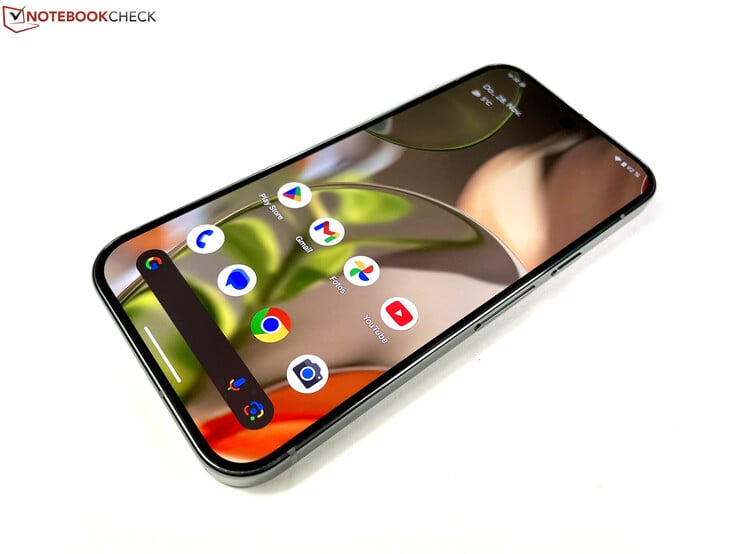







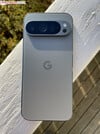



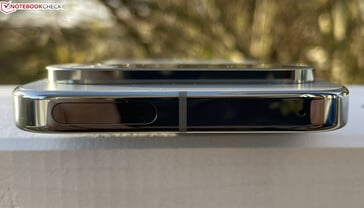
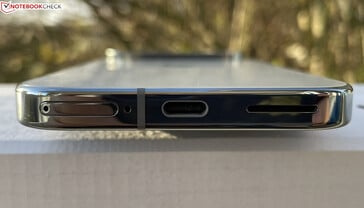
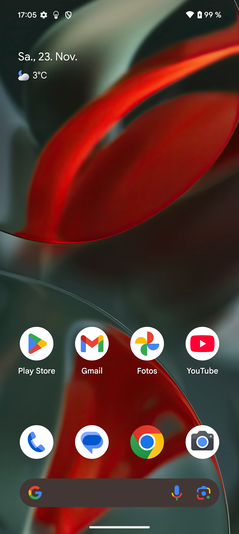
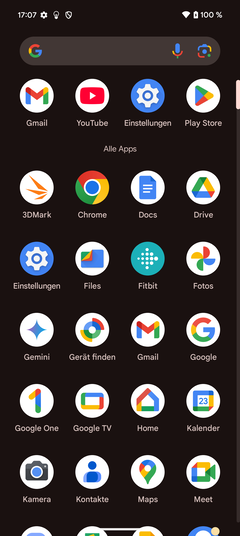
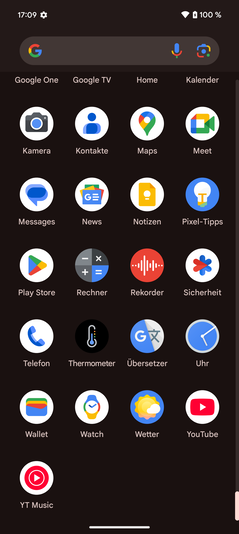
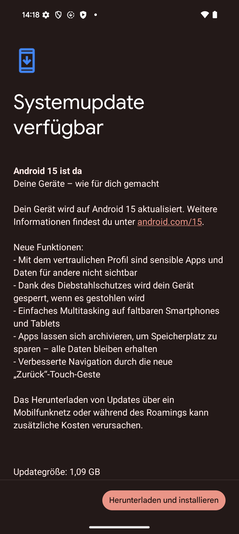

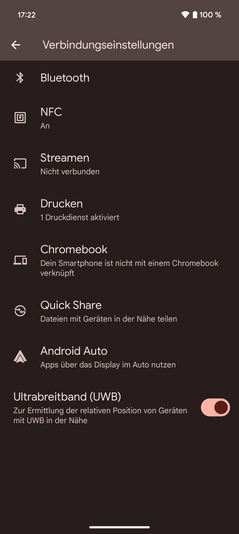
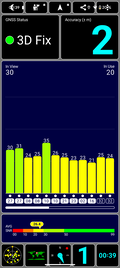
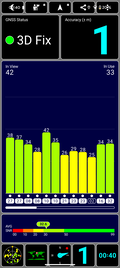
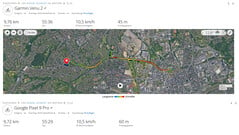










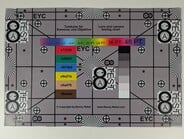




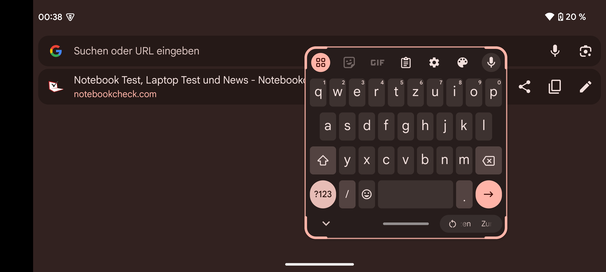
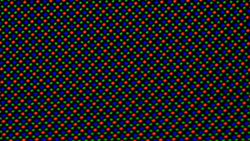
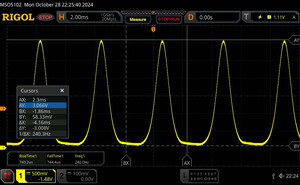







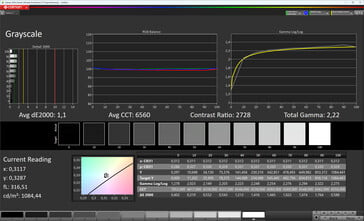
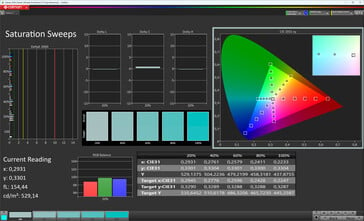
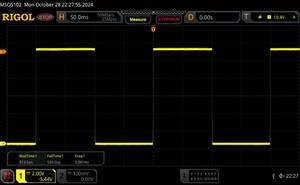
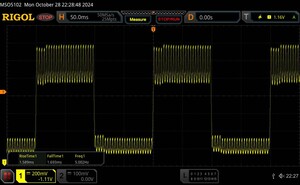
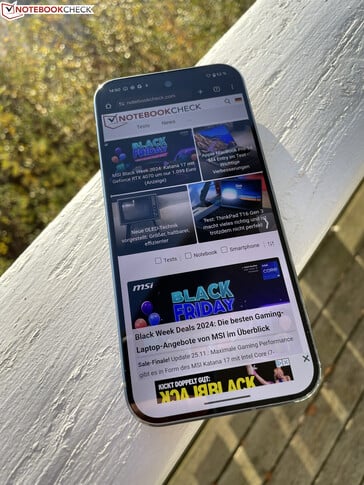
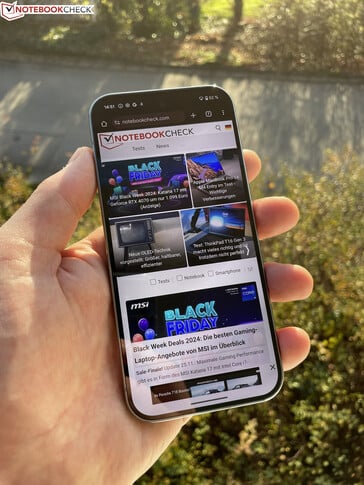

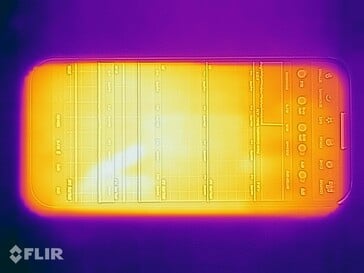
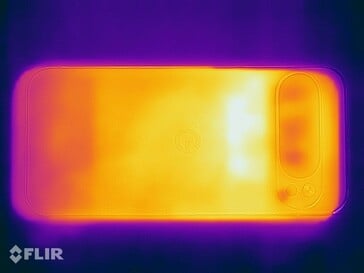
 Total Sustainability Score:
Total Sustainability Score: 








